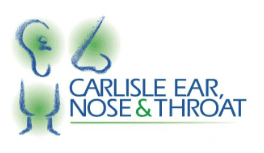Nose Bleeds
A nose bleed is called epistaxis, and this is a fairly common condition. If you have ever had a nose bleed, you probably did not even realize that only one nostril was bleeding. The blood comes from the tissue that lines the inside of the nostrils. Nosebleeds are more common in people who live in dry climates, and they occur more often during the winter months. Children ages 2 to 10 and adults ages 50 to 80 are at the highest risk for having a nose bleed, and these are most likely to happen during the morning hours (doctors are not sure why).
Causes and Concerns
The majority of time, a nose bleed is not serious. There are only a few reasons why a nose bleed could be serious and even life threating. There are several reasons why you may experience a nose bleed. The blood from an anterior nosebleed comes from in the nasal septum. The nasal septum is made up of tiny little blood vessels that all join together in the area of the septum called the Kiesselbach plexus. Almost 90% of all nose bleeds come from this area. This type of nose bleed can be treated at home, most of the time, but occasionally, a trip to the hospital or doctor’s office is necessary.
Posterior nosebleeds are rare compared to anterior nosebleeds. With this type, the bleeding starts from an artery in the back of the nose. This is more common in elderly people, and posterior nose bleeding requires hospitalization.
Other causes of nose bleeds include:
- Dry nostril passages
- Sinus infections
- Nasal passage infections (virus, bacterial or fungi)
- Excessive or hard nose blowing
- Allergies
- Deviated nasal spectrum (nasal septum is out of placed on one side)
- Cocaine use
- Foreign object in the nose (children love to put things in their noses)
- Recent nasal surgery (medical related or plastic surgery)
- Secondary to a disease or condition that has not been diagnosed yet
- Certain prescription medications (Coumadin, aspirin and anti-inflammatory medications)
- Antihistamines
- High blood pressure
- Anxiety
- Blunt force trauma to the face (car accident, hit with a baseball, trauma)
- Broken nose
Symptoms and Signs
If you or your child has frequent nose bleeding, you should consider seeing a nose and throat specialists. There are accompanying symptoms and signs that indicate an underlying problem. These include:
- Persistent dry nose
- Frequent nasal infections
- Stuffy nose and colored drainage
- Itchy, watery eyes
- Inability to smell and loss of taste
- Difficult breathing through the nose
- Mouth breathing, especially at night
Solutions and Options
When the nose bleeds, it should not last longer than 10 or 15 minutes, although it can bleed for as long as 30 minutes. If the nose bleed has not stopped within 30 minutes, medical attention is required. Most nose bleeds can be treated at home. Young children and even some adults will start to panic if they have a nose bleed. Keeping them calm is priority. When a person gets upset, and the flight or fight response occurs, the adrenaline starts to pump. This can cause the nose to bleed more or for a longer period of time. Some tips for caring for a nose bleed include:
- ·Pinch the soft spot on the bridge of the nose using your index finger and thumb.
- ·Sit up or stand up (never lie down during a nosebleed).
- ·Lean forward slightly, so the blood does not drain down the back of the throat.
- ·If you have nasal spray, squirt a few drops in the nostril that is bleeding.
Additional Reading:
